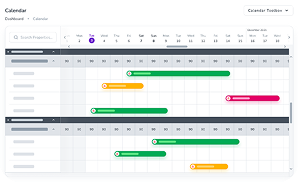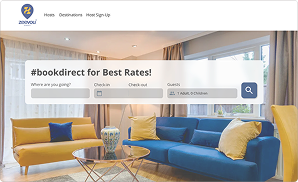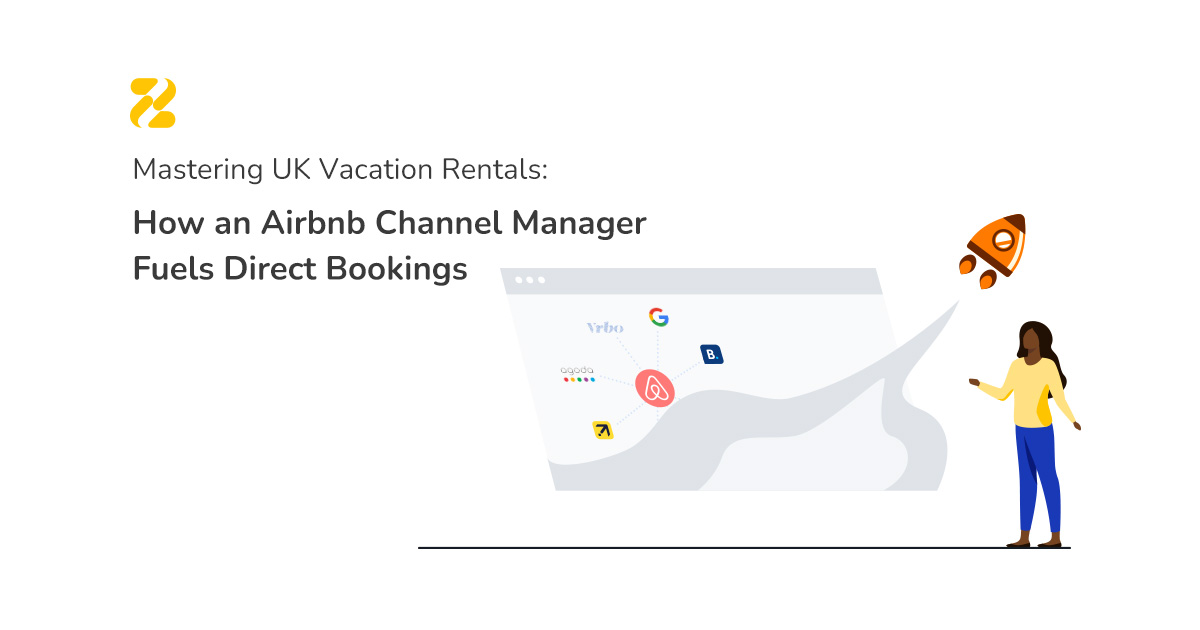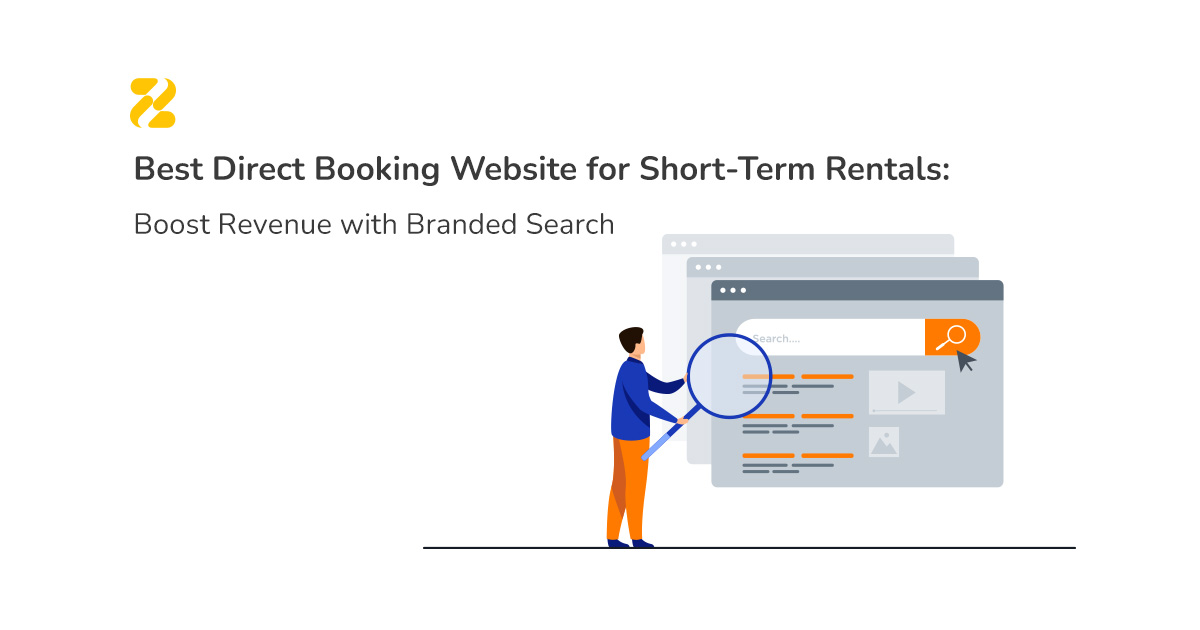You’ve likely visited a website that made you think, “Wow, this is awesome!” but many others are just frustrating. Your booking website is one of your vacation rental business’s most valuable marketing assets. Website branding for vacation rentals goes beyond logos and colours; it’s about creating an effective and enjoyable user experience.
A vacation rental website must feel like an original extension of the DNA of your brand identity. If it doesn’t, it will always feel like an afterthought to your prospects: your customers. Strong website branding boosts every part of your business, from brand recognition to sales and marketing. Here, you can find the essentials to consider when planning for robust website branding for your vacation rental.
Table of Contents
1. Set A Clear-Cut Goal for Your Vacation Rental Website
Ideally, your website needs to have a clear goal and purpose from the outset. Ask yourself the following questions: Why are we building this website? What will make our website stand out from our competitors? After visiting our website, what are we hoping our audience will do? Who are our target audience?
The website goals can include:
- Answering frequently asked questions,
- Driving leads for the sales team,
- Getting direct bookings, which are commission-free,
- Collecting email addresses to build your online community
- Showcasing guest testimonials and reviews,
- Sharing product updates and company announcements.
No matter what goals you have for your website, you’ll need specific strategies to achieve each one.
2. Create Branded Visuals for Your Vacation Rental Website
Now that you’ve outlined your website goals, it’s time to think about the website structure and layout. Website visuals are a way to build recognition of your brand image. Every visual element on your site should touch back to how you want your audience to perceive your brand.visuals are a way to build recognition of your brand image. Every visual element on your site should touch back to how you want your audience to perceive your brand.

An Ideal Website Template
If you’re building your website from scratch with a content management system like WordPress, you’ll likely need to choose a template or theme. It’s important to think about all the capabilities, pages, and functions you need for your site.
Digital design marketplaces and online stores like StudioPress or ThemeGrill offer affordable, easy-to-edit website graphics, designs, and HTML-based templates. These sites also offer design “bundles” that include fonts, icons, and illustrations for holidays and seasonal changes, helping you stay on-brand during those times.
A One-of-a-Kind Logo
Logos are the face of your brand. Because of this, your logo plays a prominent role in determining your website’s overall aesthetic style. It evokes a sense of honour, trust, pride, excellence, and integrity associated with it.
Be creative in choosing the shape and colour of your logo. Depending on the colour of your brand, customers may perceive it differently. For example, people see yellow as youthful, energetic, and bold, while they associate green with nature. On the other hand, a black-and-white colour palette comes across as sophisticated and timeless.
Once you have a logo, place it on your website’s homepage. We recommend placing it in the top left corner of each web page.
Valuable Visual Assets
You recognise Airbnb or Vrbo just by looking at their logo, right? A well-branded website contributes to brand recognition and recall. You should aim for the same memorable impact with your website graphics and marketing materials.
Among these are your site’s logo, infographics, colour schemes, and high-quality images and illustrations. Your visual assets represent your brand. Convey your brand message without using words.
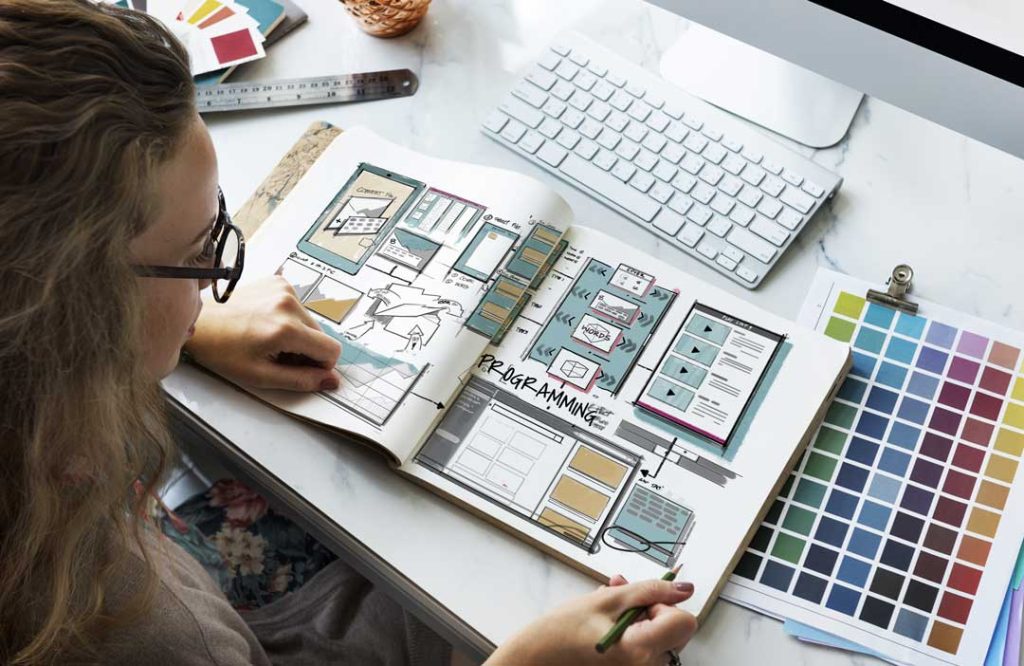
For example, Airbnb fills its homepage with brilliant, high-quality images of their properties, projecting their mission to create a world where people can ‘belong anywhere.’
A Well-Thought-Out Layout
Your vacation rental layout and structure are a more subtle way to teach your audience about your properties. That’s why your website shall shine most in visuals. Therefore, choose a website layout that accommodates large photos and focuses on visual elements.
Remember to keep your website clear, with plenty of white space. Make sure the website has a streamlined navigation bar that facilitates user flow. A cluttered or not straightforward layout will make your potential guests leave your website immediately.
Some standard pages to include when planning for your website layout are Homepage, About page, Property or Service Page, FAQ page and Contact page. Other website components are Header, Footer, Navigation, Buttons, Fonts and typography.

3. Write Branded Text for Your Vacation Rental Website
You’ve learnt how to brand your vacation rental website visually. Let’s discuss your brand language now. How your brand communicates — the words you use, how you structure sentences, your voice, and tone — defines its personality. Whether you are writing CTAs, headings, or lengthy blog posts, weave your brand voice into every piece of text on your website.
A Catchy Tagline
Even though not every business has a tagline, taglines are a great way to highlight your brand’s personality or values. Consider Zeevou’s “Freedom to Grow” — this catchy tagline highlights the brand, communicates the company’s values, connects customers to the brand, and encourages them to consider it in their decision-making process.
Brands can incorporate taglines into their logos or include them on their business cards and websites. A great place to display your tagline on your website is the homepage, ensuring that users see it immediately upon entering your site.
Authentic Brand Story
Your story is a clear, concise narrative about your hospitality business. It explains the reasons behind your business’s foundation and outlines its vision for the future.
When crafting your brand story, make sure it is consistent with the personality of your vacation rental business. This will help explain your mission, purpose, and values.
You can place your brand story on the About page of your website. Feel free to mention your story whenever it’s relevant in your blog posts, social media pages, and marketing materials.
Insightful Blog Posts
Globally, 70 million new posts are published monthly, and over 42% of the web is built on WordPress. Blogging continues to be a key component of online marketing strategies as of 2024.
Typically, a blog post addresses searchable questions. It’s indexed on Google, making it likely the first way potential guests discover your hospitality business.
Guests will benefit from reading the posts, and blogs can also help websites rank higher in search engine results. Moreover, creating comprehensive long-form content enhances your brand’s authority in the industry. It builds brand awareness and brings in organic traffic.

Compelling Website Copy
Your website copy should reflect your brand voice. This includes your website’s headers, general website copy, calls-to-action, navigation bar headings, landing pages, and FAQs.
Even microcopy – those tiny, hardly noticeable elements of web copy – can drastically alter a brand’s voice and customer relationships.
Every customer interaction, whether through lengthy blog posts or concise website copy, shapes their perception of your brand.
Keeping your website branding tone consistent across all your written content will make your vacation rental brand more powerful.
4. Build A Branded Website for Your Vacation Rental
The online world is the best place to let your brand shine. Remember that it will still be wise to follow your basic branding guidelines. Nevertheless, you can consider your vacation rental website a virtual playground for your brand.
Not only will it be a fun place to work with your brand, but it will also be one of the first places guests see your brand. Why not introduce them to something professional and aesthetically pleasing?
Decide to get a vacation rental website builder or hire a web designer and developer. Hosts can customise their website design to suit their preferences and select what works best for them.
Vacation Rental Website Builder
Fortunately, it’s never been easier to create a website for your vacation rental. The trick is to find a good website builder with great pricing, features to help you find the one that matches your needs, budget, and style.
A number of vacation rental software solutions include a vacation rental website builder in their packages.
A good vacation rental website builder can automatically complete most of the branding requirements for hosts. This means that hosts do not need any prior coding experience or other technical know-how.
Zeevou offers one of the best website builders. This free and user-friendly tool will create your own website and import your listings from Airbnb in a matter of minutes.

5. Offer Great User Experience
Great user experience may sound like a cliché. Yet, nothing captures the impact of a seamless interaction that a short-term rental website visitor can experience upon landing on your site.
To help deliver a valuable and meaningful user experience on your website, pay particular attention to the following tips (as described in Peter Morville’s Honeycomb Model):
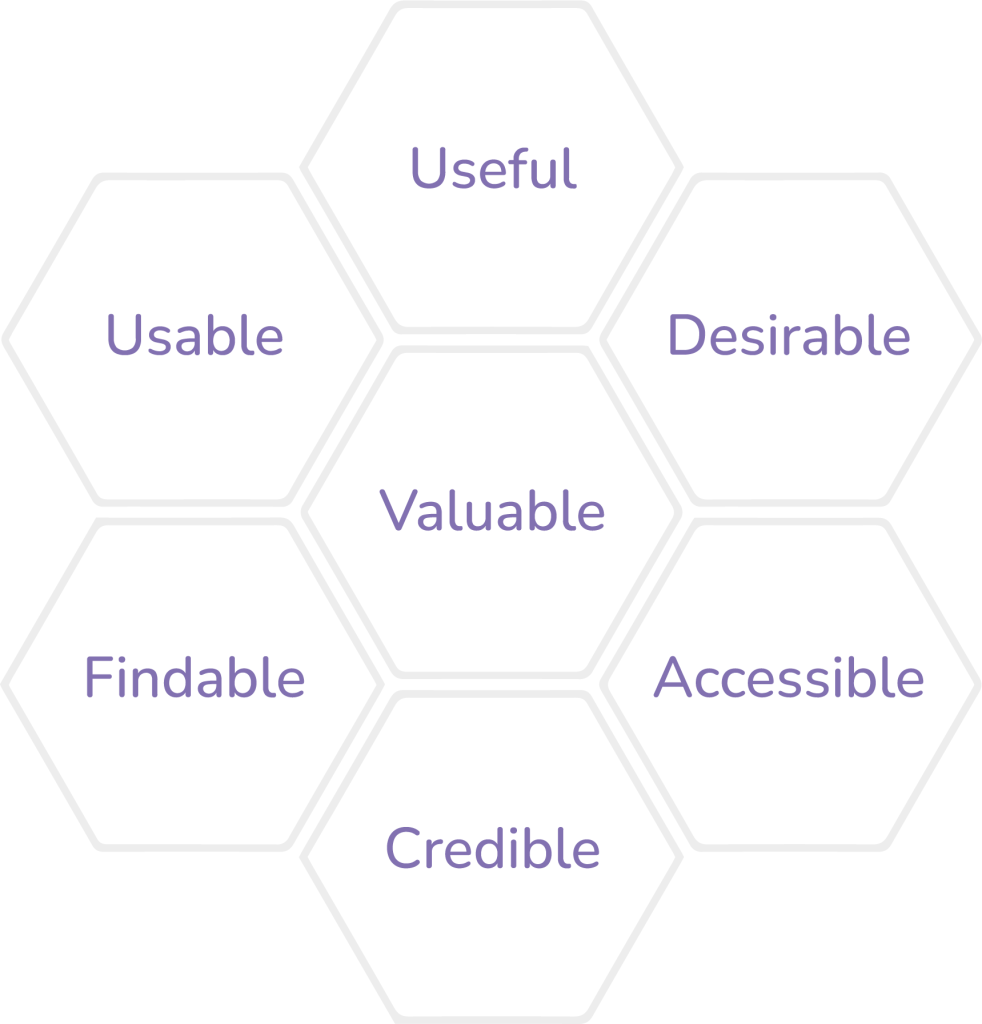
Useful: Aim for original website content that fulfils a user’s need.
Usable: Aim for the website to be easy to use.
Desirable: Evoke emotions in your design elements.
Findable: It should be effortless for the user to look for specific content.
Credible: Your website content should be able to gain the trust of users and visitors.
Valuable: Users must want or need to use your product.
Accessible: Your website should be accessible to people with disabilities and limitations.
Implementing website personalization is one of the best practices for brands across various industries to enhance UX (User Experience). For example, intuitive properties or destination recommendations upon landing on your website will make visitors feel that your website specifically tailors to their needs and preferences.
Concluding Remarks
Now that you’ve learned the essentials of successful website branding for your vacation rental, you can transition from feeling unsure to feeling confident in your website branding efforts.
To summarise, set a clear-cut goal at the beginning. Next, implement a well-thought-out layout, enhance user experience, create strategic content, and choose a unique colour palette that connects with your audience.
Ready to elevate your website branding and make a stellar first impression? Sign up for Zeevou and let us craft the perfect website for your vacation rental business.
Featured Image by pch.vector on Freepik.
